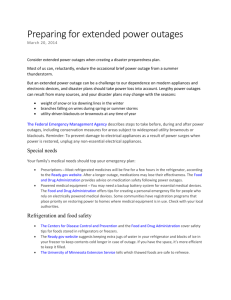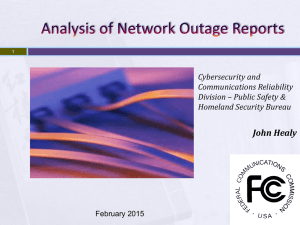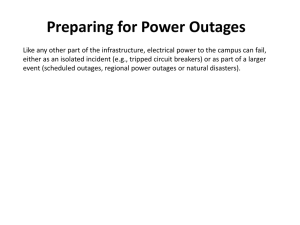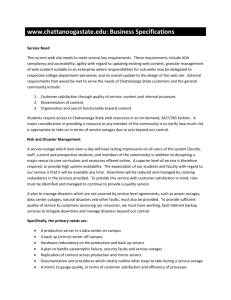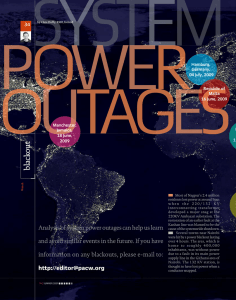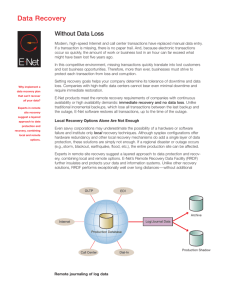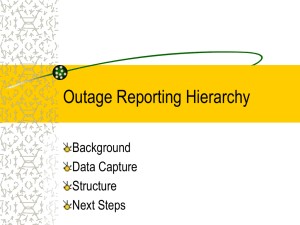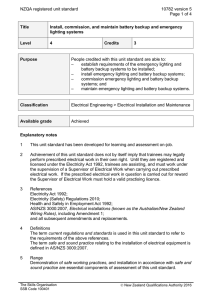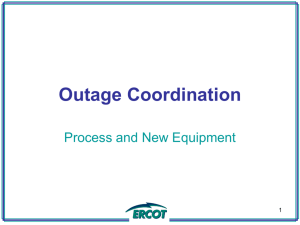POWER OUTAGES AND YOUR BUSINESS
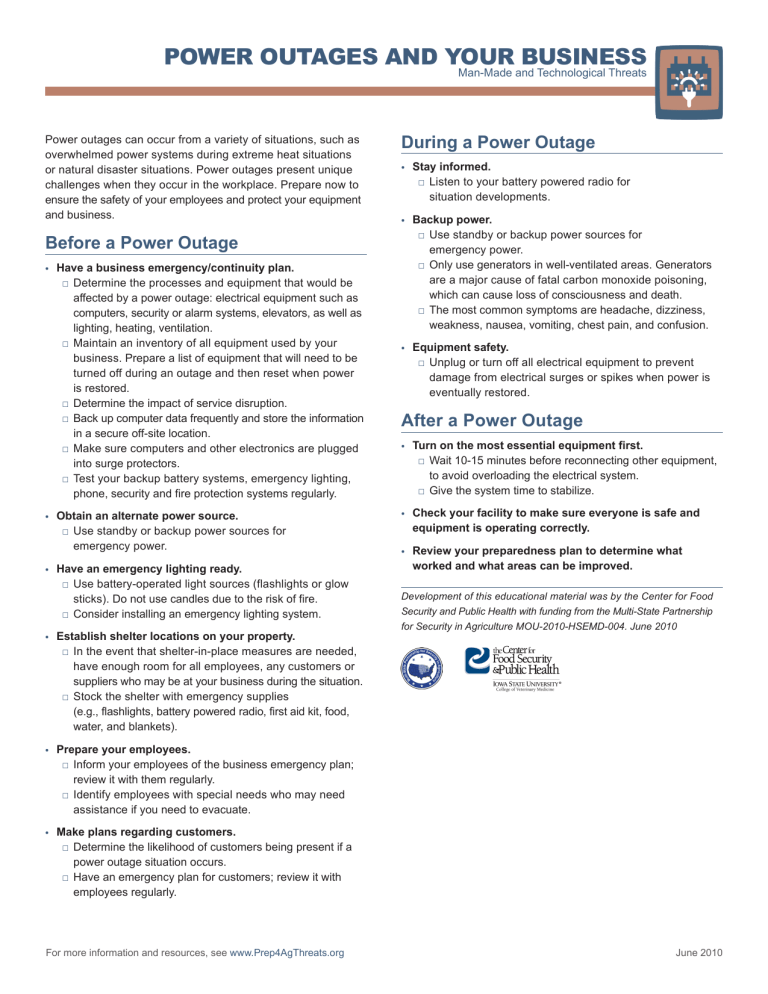
POWER OUTAGES AND YOUR BUSINESS
Man-Made and Technological Threats
Power outages can occur from a variety of situations, such as overwhelmed power systems during extreme heat situations or natural disaster situations. Power outages present unique challenges when they occur in the workplace. Prepare now to ensure the safety of your employees and protect your equipment and business.
Before a Power Outage
• Have a business emergency/continuity plan.
□ Determine the processes and equipment that would be
affected by a power outage: electrical equipment such as
computers, security or alarm systems, elevators, as well as
lighting, heating, ventilation.
□ Maintain an inventory of all equipment used by your
business. Prepare a list of equipment that will need to be
turned off during an outage and then reset when power
is restored.
□ Determine the impact of service disruption.
□ Back up computer data frequently and store the information
in a secure off-site location.
□ Make sure computers and other electronics are plugged
into surge protectors.
□ Test your backup battery systems, emergency lighting,
phone, security and fire protection systems regularly.
• Obtain an alternate power source.
□ Use standby or backup power sources for
emergency power.
• Have an emergency lighting ready.
□ Use battery-operated light sources (flashlights or glow
sticks). Do not use candles due to the risk of fire.
□ Consider installing an emergency lighting system.
• Establish shelter locations on your property.
□ In the event that shelter-in-place measures are needed,
have enough room for all employees, any customers or
suppliers who may be at your business during the situation.
□ Stock the shelter with emergency supplies
(e.g., flashlights, battery powered radio, first aid kit, food,
water, and blankets).
• Prepare your employees.
□ Inform your employees of the business emergency plan;
review it with them regularly.
□ Identify employees with special needs who may need
assistance if you need to evacuate.
• Make plans regarding customers.
□ Determine the likelihood of customers being present if a
power outage situation occurs.
□ Have an emergency plan for customers; review it with
employees regularly.
For more information and resources, see www.Prep4AgThreats.org
During a Power Outage
• Stay informed.
□ Listen to your battery powered radio for
situation developments.
• Backup power.
□ Use standby or backup power sources for
emergency power.
□ Only use generators in well-ventilated areas. Generators
are a major cause of fatal carbon monoxide poisoning,
which can cause loss of consciousness and death.
□ The most common symptoms are headache, dizziness,
weakness, nausea, vomiting, chest pain, and confusion.
• Equipment safety.
□ Unplug or turn off all electrical equipment to prevent
damage from electrical surges or spikes when power is
eventually restored.
After a Power Outage
• Turn on the most essential equipment first.
□ Wait 10-15 minutes before reconnecting other equipment,
to avoid overloading the electrical system.
□ Give the system time to stabilize.
• Check your facility to make sure everyone is safe and
equipment is operating correctly.
• Review your preparedness plan to determine what
worked and what areas can be improved.
Development of this educational material was by the Center for Food
Security and Public Health with funding from the Multi-State Partnership for Security in Agriculture MOU-2010-HSEMD-004. June 2010
June 2010
